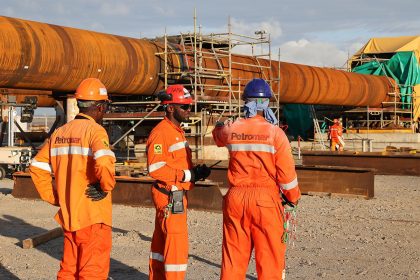By choosing to adopt a specialist data solution, mining businesses can benefit from improved efficiencies and productivity which ultimately improves the bottom line, according to Pedro Guerreiro, SAP Africa.
Mining is a challenging and forever evolving business, one tied to numerous internal and external forces. This could be said for many business sectors, but mining’s particular financial girth makes it stand out. It’s an industry that generates capital so large it can determine the health of country GDPs. In 2014, the top ten mining companies globally had shared revenues of nearly half a trillion dollars, and that was a bad year. In gambling parlance, mining is a high roller, a suitable definition considering the industry’s volatile nature.
PWC’s Mine 2014 reported last year that market capitalisation of the top 40 mining firms dropped by twenty three percent, representing an incredible $280 billion.
It would be comforting to isolate distinct and uncommon causes to explain the drop, but that is simply not the case. Instead, the threats are regular and a number lie out of mining’s control. Foremost is the pricing of commodities, which is usually the curse of an industry invested in core financial drivers. Coal, gold, diamonds, platinum, cobalt, tin, bauxite; it’s a long list that all help manufacture the foundation of modern society. If mining stops, so too does the world. The result is that the world always has a say in mining’s fortunes.
Other factors fall closer to mining’s tree. It is a strange business, where the longer you operate in a market, the harder it becomes to turn a profit. Mineral seams become tougher to reach, the quality of ore reduces as a result, and more effort has to go into extracting true value. Mining is expensive; it manages an unwieldy family of assets, a protean workforce, shifting regulations and locations found in remote areas. This last element means mines almost always bring their own infrastructure with them.
It’s a picture of contradiction and chaos, an industrial Frankenstein. But as that character’s creator, Mary Shelley, once wrote, invention does not consist in creating out of void but out of chaos.
Mining has a lot of useful chaos – the means to shape that resides in big data and the Internet of Things. The bedrock of this approach is how mining firms are able to establish real-time and day-to-day insights to their operations, discover efficiencies through automation, respond proactively to challenges on the ground, and manage value chains in new ways. Above all, it opens the door towards building new business methodologies for the mining operations of tomorrow.
TECHNOLOGY DELIVERS EFFICIENCY
One clear recipe for success is to find efficiencies in the supply chain. Mines move assets and commodities through a large web of suppliers and clients. Great benefits are being found when these interactions are automated and orchestrated through a single source-to-source supplier platform such as Ariba.
Automated invoice, verification and billing systems enable mines to spot discrepancies as well as take advantage of early-payment bonuses. Automated logistics also deliver efficiency, such as fine-tuning transportation loading with exact quantities; which is something that has been done with great success at Rio Tinto mines.
By using Internet of Things platforms, sensors and predictive analytics can reduce time spent on the maintenance of assets. Breakdowns can be predicted and staff directed in real-time through mobile platforms to address failures. According to SAP’s own research, such solutions can reduce an operation’s annual maintenance costs by more than 30 percent.
Sensors and big data can also ensure the optimal use of mining assets – not just on-site, but across the company’s entire ecosystem. Underperforming assets can be identified and allocated across the scope of all operations.
ROBUST PLATFORM
However not all big data solutions for mines are the same. To reap real benefits requires a solution honed to the nuances of the sector. Asset management is relatively straightforward, but workforce, and health and safety requirements are considerably less so. A truly robust technology platform for mines should include advanced human resource and regulatory features.
This includes worker performance and training, access to appropriate safety documentation and the automation of any auditing requirements. New training methodologies that cater to a specific workforce can quell dissatisfaction, while reducing the labour required to deliver effective auditing results is a major cost saver. Automation also reduces the pressure to monitor and enhance reporting on emissions and other regulatory oversights.
A technology solution must illuminate an operation’s financial character, providing tools and insights for managers. In such a volatile field such as mining, the ability to understand both historical and forward-looking views of financial performance is invaluable.
Above all, and as mentioned earlier, such a solution must be a single platform. This enables mines to unify their main moving parts, consolidate operations and gain a true high-level overview of what the business is doing.
It’s not only a concept that has shown remarkable improvements for countless industries, but is the future of technology. Instead of relying on the diaspora of machines, software suits and fragmented data pools of the past, modern business solutions resemble SAP HANA; single, yet modular and powerful implementations that pull on all the threads explored above. From tracking a customer’s interactions, to training workers, to allocating the right number of trucks to an operation; these are no longer dislocated joints, but increasingly a single organism with many moving parts.
Not all platforms are up to the task. It requires a focused and specialised solution to get the job done, both from a technology view and the human support and expertise that makes it happen.
By Pedro Guerreiro, Head of Sales: Energy & Natural Resources, SAP































